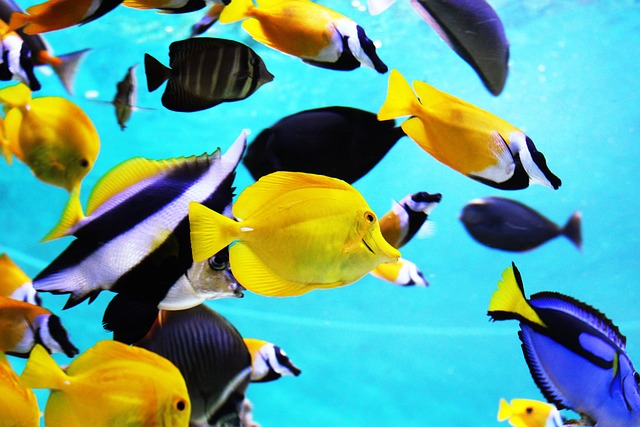As an aquarium enthusiast, one of the most exciting aspects of setting up a new fish tank is choosing the perfect combination of fish to inhabit it. However, not all fish get along swimmingly, and ensuring compatibility is crucial for maintaining a harmonious and thriving aquatic ecosystem. In this guide, we’ll explore the factors to consider when selecting fish for your home aquarium, ensuring the perfect balance of species that will coexist peacefully and bring beauty to your underwater world.
- Understanding Fish Temperament: Fish, like humans, have unique personalities. Some species are peaceful and thrive in community setups, while others are territorial and aggressive. It’s essential to research and understand the temperament of each fish species you’re interested in before adding them to your tank. A single aggressive fish can disrupt the entire community, causing stress and potential harm to others.
- Assessing Size and Growth Potential: When planning your fish tank, take into account the adult size and growth potential of the fish species. Mixing fish that have significantly different sizes can lead to issues, such as one fish outcompeting others for food or smaller fish becoming potential prey. It’s crucial to choose species that will grow harmoniously together to maintain a balanced and visually appealing aquarium.
- Considering Water Parameters: Different fish species have specific requirements for water temperature, pH levels, and water hardness. It’s vital to select fish that share similar environmental needs to avoid stressing or endangering any inhabitants. Research the preferred water parameters for each species you’re considering and strive to create a suitable environment that meets the needs of all the fish you plan to keep.
- Identifying Compatible Species: Certain fish species have a natural affinity for one another and can peacefully coexist in the same tank. Look for fish that originate from the same region or have similar habitat preferences. Additionally, consider the fish’s feeding habits to ensure they won’t compete for the same food source. Some popular combinations include guppies and neon tetras, angelfish and corydoras catfish, or swordtails and platies. However, always research and double-check the compatibility of any species before making final decisions.
- Introducing New Fish: Introducing new fish to an existing community requires caution and careful observation. Quarantine new fish for a few weeks to ensure they are healthy and free from diseases before introducing them to your main tank. When adding them, monitor the fish closely for any signs of aggression or stress. If aggression occurs, be prepared to separate or rehome incompatible fish to maintain a peaceful environment.
- Avoiding Overstocking: Overstocking your fish tank is a common mistake that can lead to numerous issues. It puts excessive stress on the filtration system and can compromise water quality, leading to poor health and even death of the fish. Follow appropriate stocking guidelines, which generally recommend one inch of fish per gallon of water as a general rule of thumb, although this can vary depending on the species.
Conclusion: Creating a harmonious community of fish in your home aquarium requires thoughtful consideration of their compatibility, temperament, size, water parameters, and suitable tank mates. By conducting thorough research and making informed choices, you can create a vibrant and balanced underwater ecosystem that will delight both you and your fish. Remember, a compatible community leads to happier and healthier fish, making your aquarium a true masterpiece.
We hope you found this guide helpful in selecting fish for your home aquarium. Happy fishkeeping!

